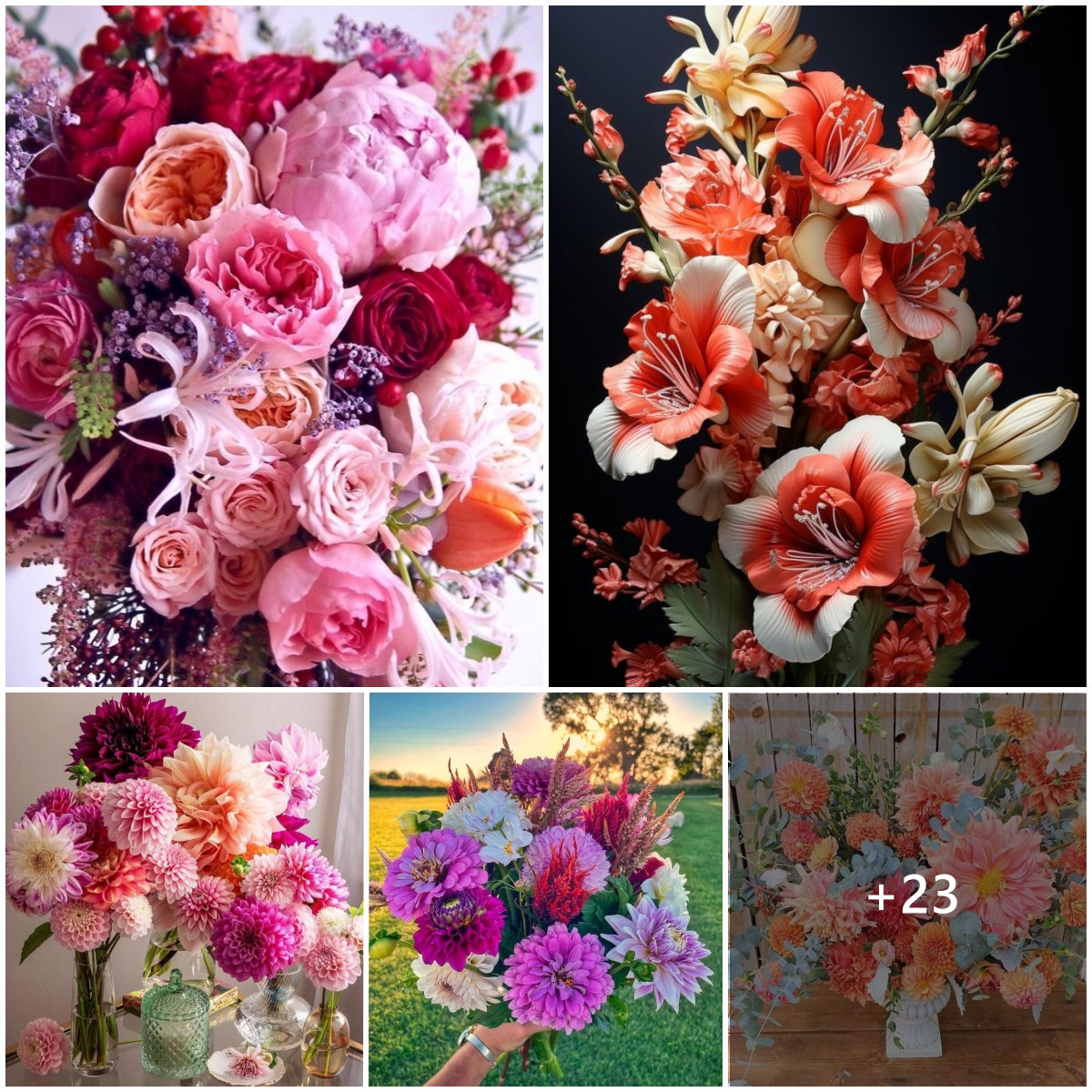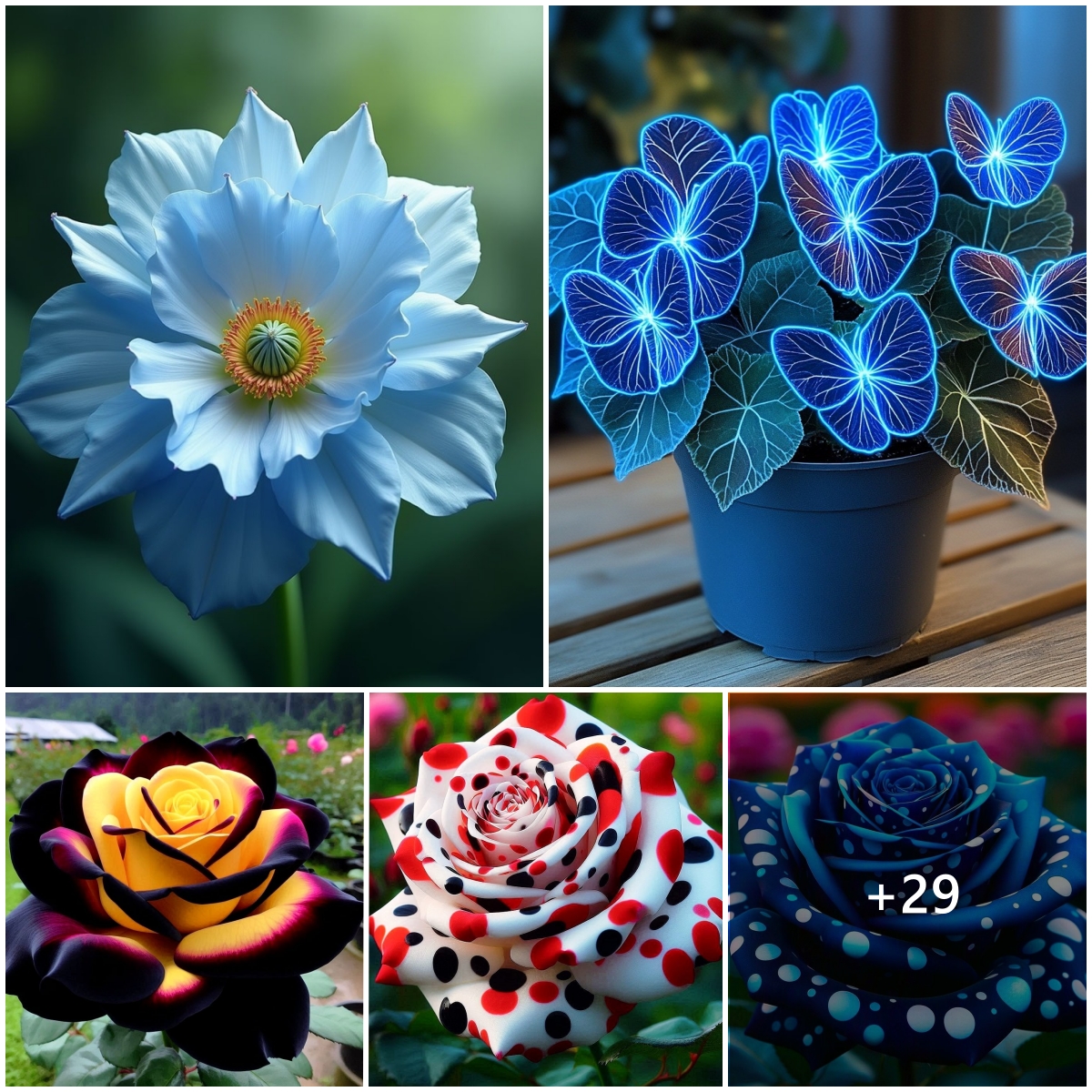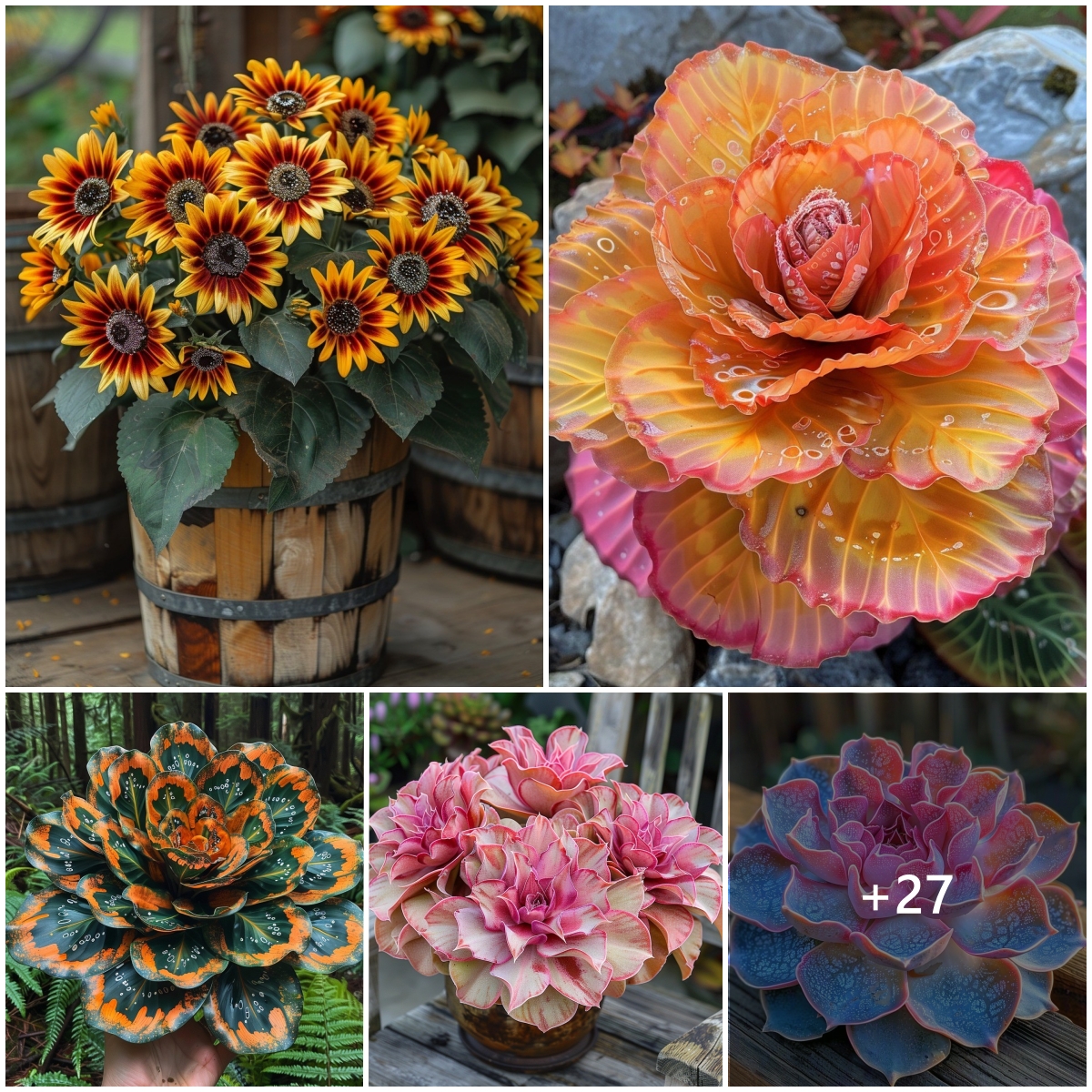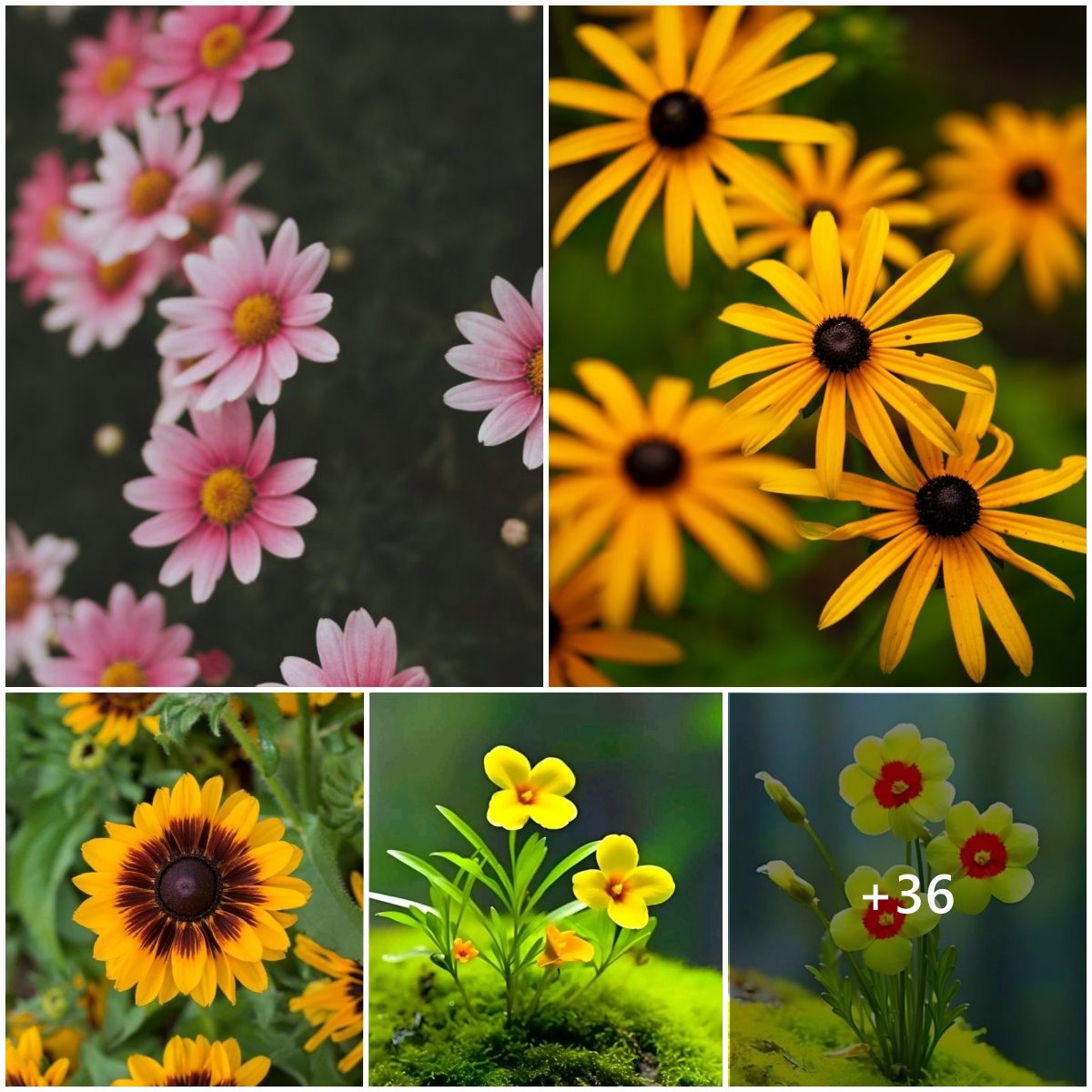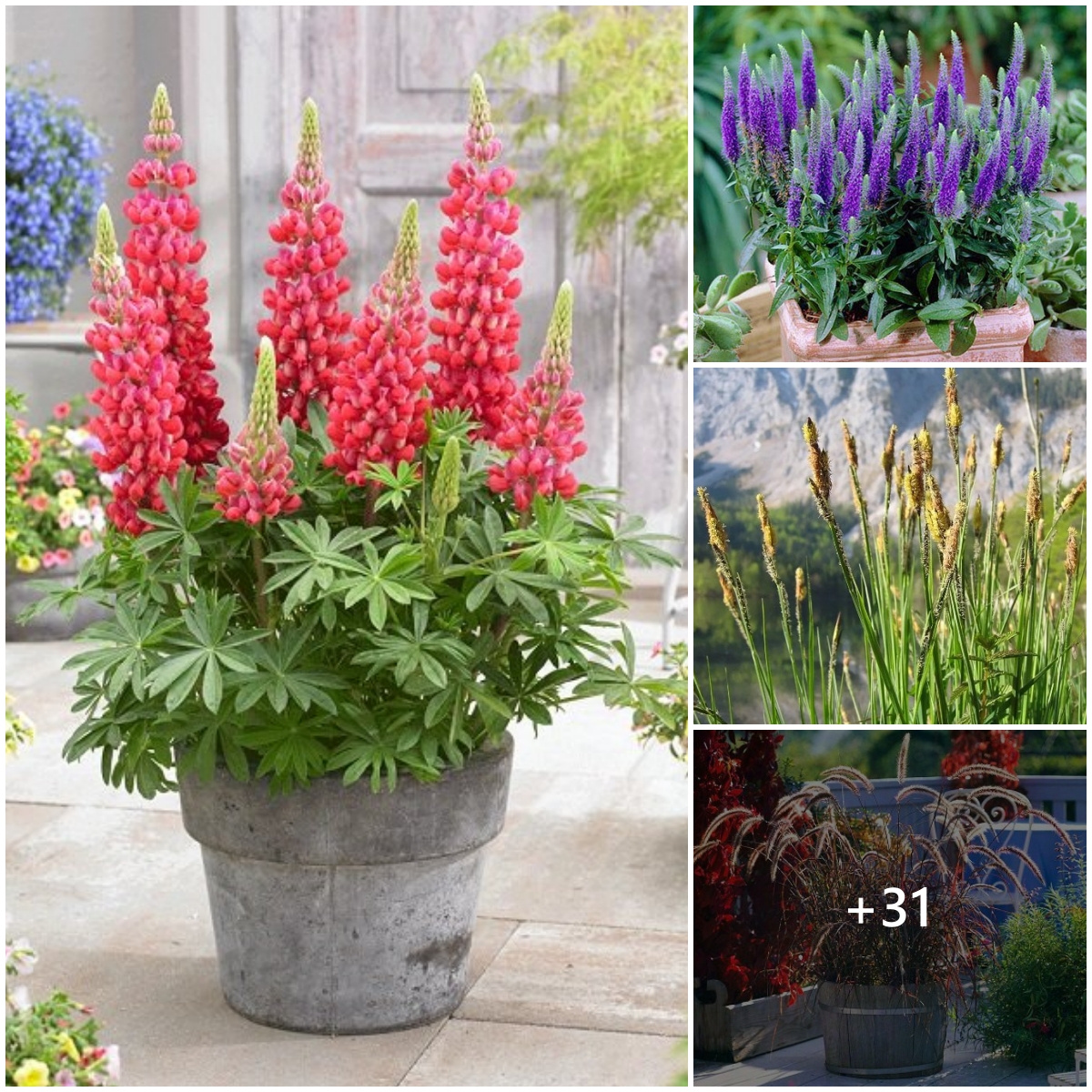These plants, however, are susceptible to environmental conditions and various diseases that cause them to wilt or alter their appearance.
Fortunately, you came to the right place. Below we list 10 common problems with hydrangea plants, as well as their corresponding solutions and preventive measures.
1. Withered or fallen flowers

When your hydrangeas are exposed to too much sunlight and do not receive enough water, their flowers will look dry and brown, and their foliage will begin to drop.
To revive wilting hydrangeas, cut off any dead flowers or leaves and consider planting them in moist, well-drained soil with compost.
After that, water your hydrangeas deeply for several minutes and check the soil moisture level day by day.
Meanwhile, place your hydrangeas in a partially shaded area where they can get enough morning sun but not too much afternoon sun.
Next, give your hydrangeas at least 3 to 6 hours of full sunlight per day. At the same time, water them regularly, no more than three times a week.
2. The color of the flower becomes dim.
While fading colors on your hydrangea may be due to natural processes, there are other reasons why this occurs:
Make sure the soil pH stays between 5.2 and 5.5. This pH level allows your hydrangea to better absorb nutrients.
In the case of Hydrangea macrophylla, however, you can adjust the pH of the soil depending on the color you want to achieve.
Consequently, a low-phosphorus fertilizer benefits blue hydrangeas, while general organic fertilizers are substantial for other variants.
3. Not producing flowers
Most hydrangeas usually begin producing flowers in spring or early summer. However, there are cases where hydrangeas appear lush but refuse to produce flowers.
Too much nitrogen in the soil and careless pruning are the main causes of this problem. So to solve this problem, avoid using high nitrogen fertilizers and switch to high phosphorus fertilizers.
On the other hand, pruning methods are not universal for all hydrangeas, so properly identify your hydrangea before pruning it (whether its flowers sprout on new or old wood).
4. Weak or drooping leaves or stems
The stems, in particular, can sometimes droop when the flowers become too large or heavy to accommodate. Likewise, wilting weakens both the stems and the leaves.
In addition to meeting all nutritional and environmental requirements, do not over-fertilize. Avoid fertilizers high in nitrogen and opt for those that contain enough phosphorus and potassium.
You can support the stems by tying them to a wooden post. However, it is also a good idea to cut some flowers to decorate.
Additionally, you can choose to trim some flowers so that the stems adapt to their weight.
Lastly, don’t forget to water your hydrangeas regularly, especially during the hot season.
5. Brown the leaves
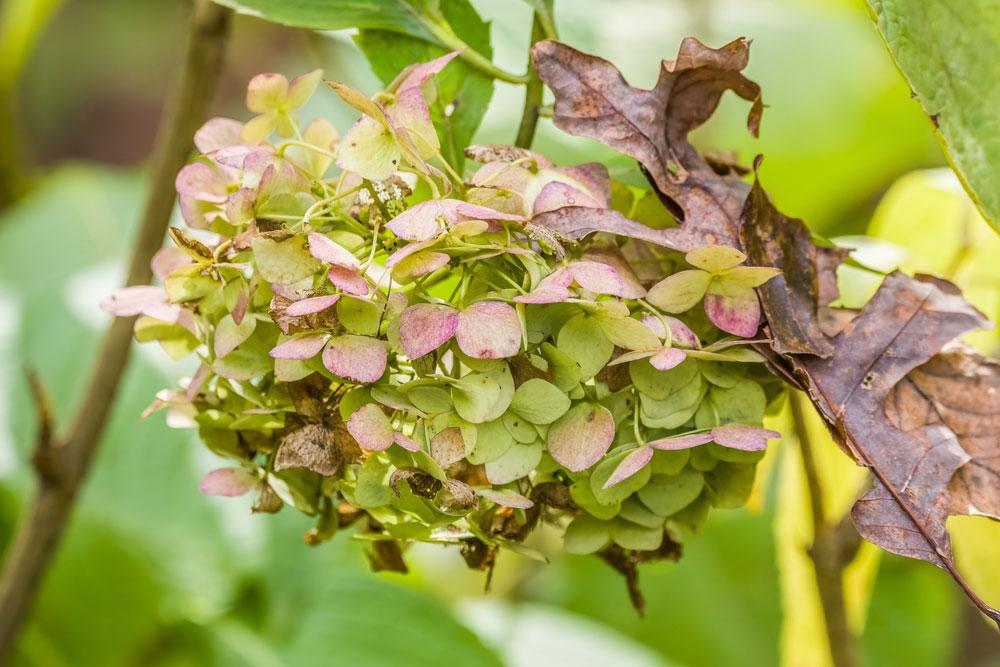
Sometimes the edges of hydrangea leaves turn brown or appear to wilt. Read below to know the solution to this problem.
Darkening of hydrangea leaves is usually due to overwatering or excessive exposure to wind. Excessive sunlight and planting hydrangeas in small pots are also possible reasons.
To solve this problem, water the soil directly and let the water soak. Also, consider transferring your hydrangeas into the ground once they become too large for pots.
Lastly, keep your hydrangeas away from areas exposed to high, moisture-robbing winds or add mulch to the soil.
6. Bacterial leaf spots

Are there many watery or reddish-purple spots on hydrangea leaves? These spots could be due to a bacterial disease that affects hydrangeas after heavy rain.
Bacteria enter the plant system through wounds in the leaves or other natural openings.
To repair bacterial leaf spots, first remove infected leaves. After removing affected leaves, spray copper-based fungicides.
At the same time, avoid overwatering or wetting the leaves of your plant, as this practice further aggravates the problem.
7. Fungal leaf spots
Fungal leaf spots appear brown with a tan center, although some lesions appear red to brown.
Spraying your plants with a fungicide is the quickest antidote that will limit the spread of these horrible spots.
Also, be sure to cut off all infected leaves. Sometimes you will need to isolate your hydrangea from other plants and transplant it to a new pot.
Aside from this, avoid using sprays or sprays to water your hydrangeas.
8. Powdery mildew
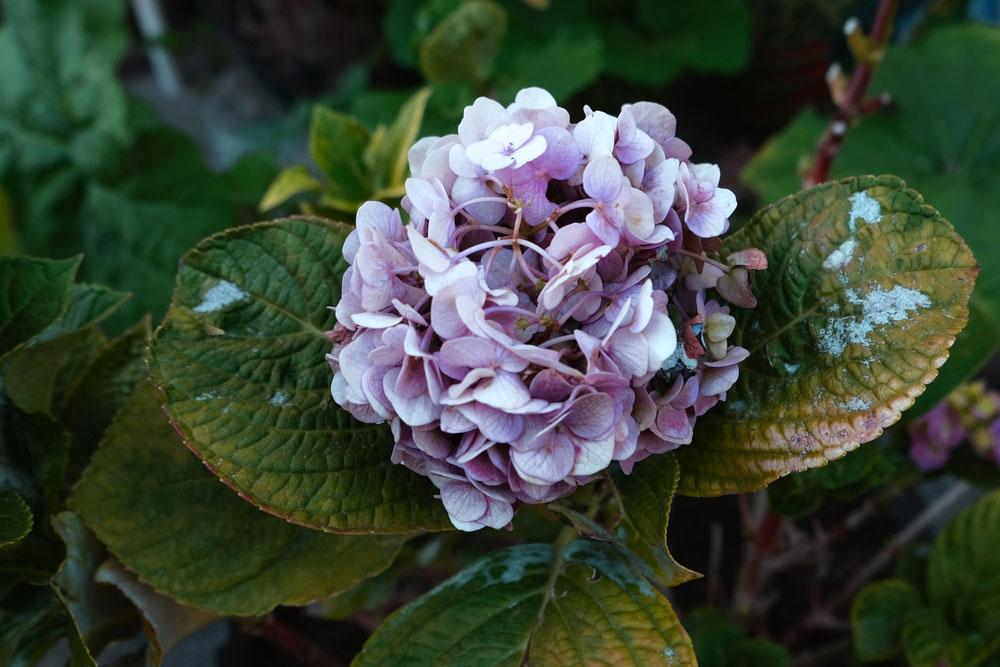
Powdery mildew appears as a white, powdery growth on the leaves of hydrangeas. In addition to its disturbing appearance, powdery mildew causes deformation of the leaves.
Powdery mildew is caused by fungal spores that spread through the air. This condition affects hydrangeas kept in congested, higher humidity areas.
You can use neem or horticultural oils to get rid of powdery mildew. Interestingly, you can make a homemade treatment by combining three drops of dish soap and half a tablespoon of baking soda in two liters of water.
9. Discoloration of leaves.
When your leaves appear yellowish to orange, especially around the edges, this condition may be due to a nitrogen or iron deficiency.
Iron is an essential mineral that plants need to complete natural processes such as the formation of chlorophyll. When your hydrangea doesn’t get enough iron, its leaves will have yellow edges.
To overcome mineral deficiency, use fertilizers with additional iron content.
In addition to mineral deficiency, dehydration and inadequate sun exposure can also be the cause of discoloration of hydrangea leaves. Therefore, keep your plants hydrated and give them enough morning sunlight.
10. Holes in the leaves
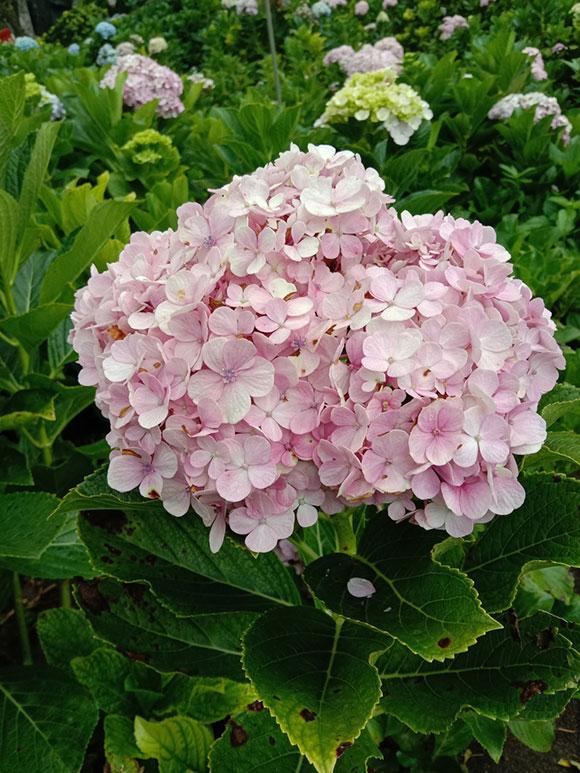
These holes are caused by creepy crawlies like beetles, slugs, green bugs, and caterpillars.
Slugs, in particular, love to attack young hydrangeas. Fruit worms, on the other hand, feed on mature hydrangea leaves.
To get rid of slugs, you may need to remove mulch from your plant, as they attract them. To keep them away, you can also create a barrier with sharp sand around the hydrangeas.
At the same time, biological insecticides or insecticidal soaps help eliminate insects and caterpillars.
Some of the ten common hydrangea problems include wilting and plant diseases caused by bacteria or fungi. To treat plant diseases, use horticultural oils, fungicides and biological insecticides for pests.
These problems can be exacerbated by too much or too little sun exposure, improper watering, and poor nutrition. So the best way to avoid these problems is to keep your hydrangeas healthy by getting enough morning sun, water, and nutrition.
We hope we have helped solve your hydrangea problems. Happy gardening!

